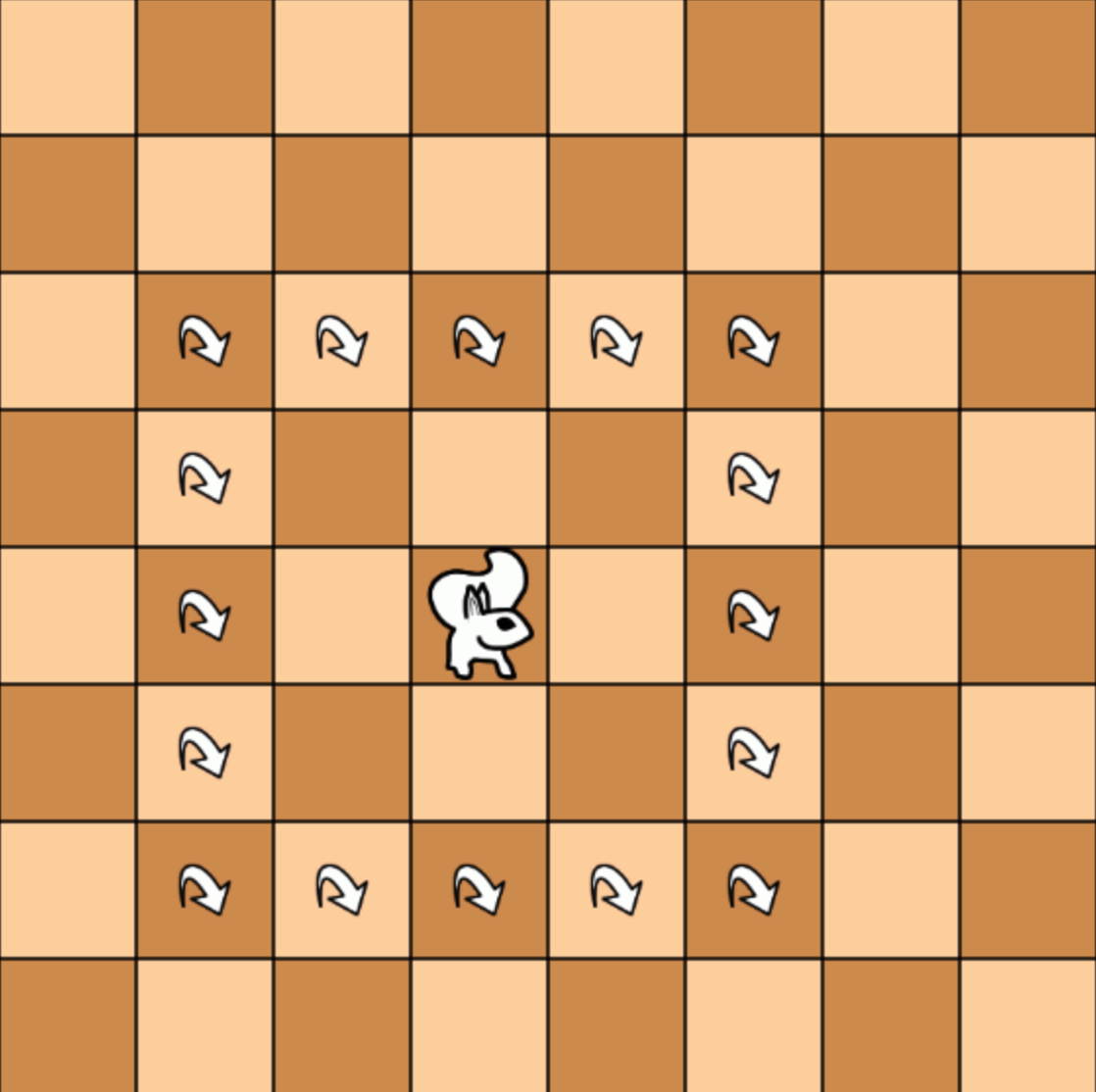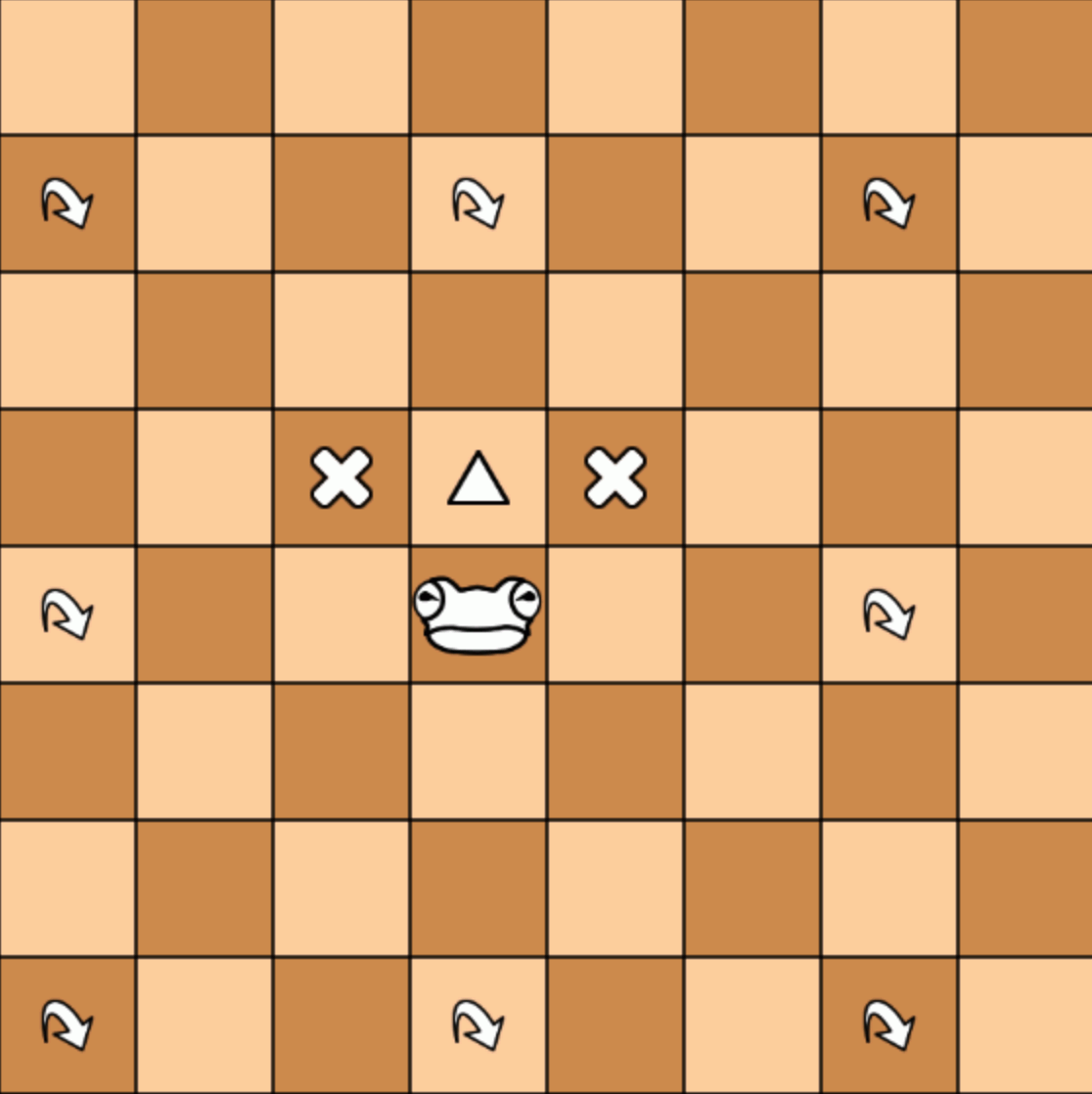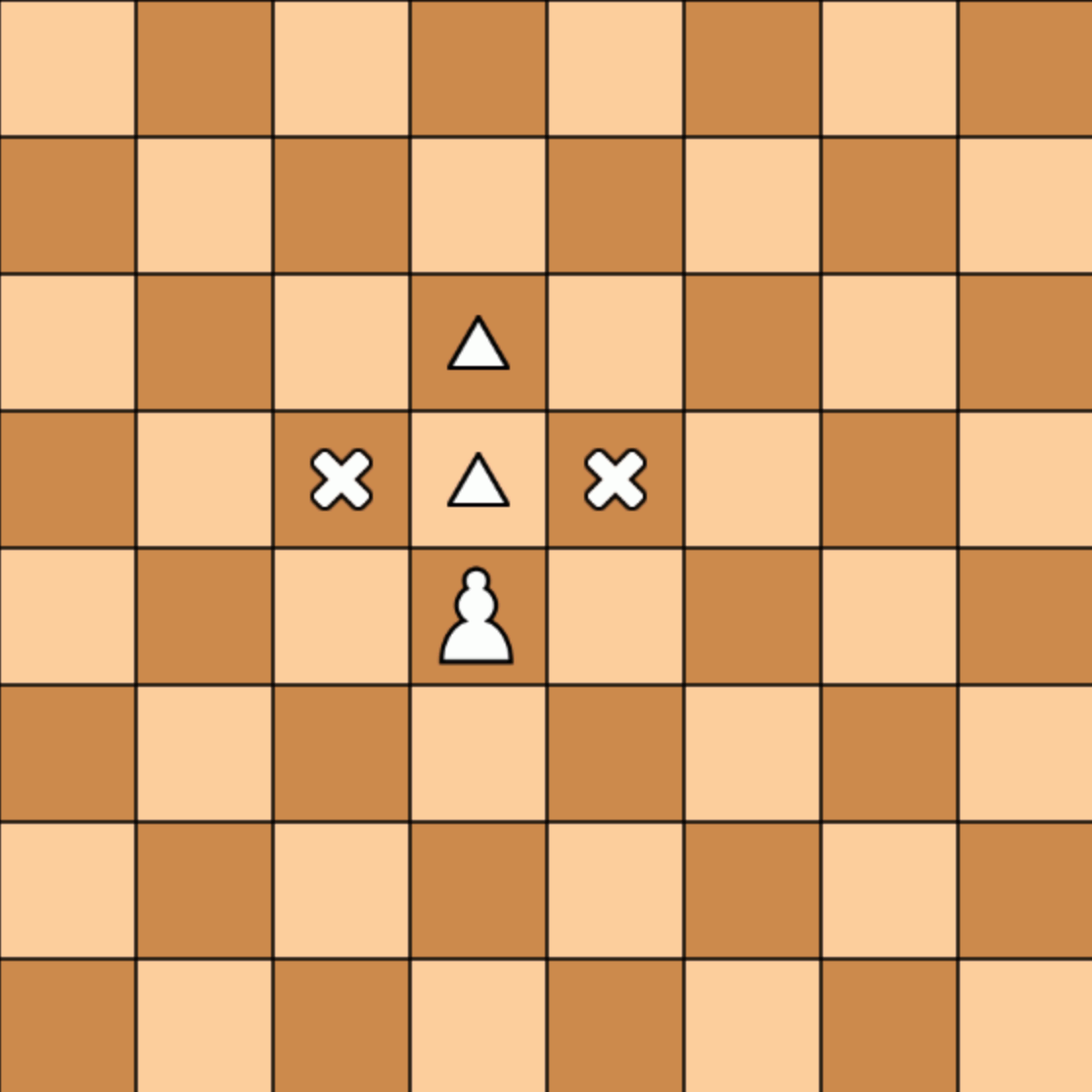Fantastic XIII
Who said that a chess-variant board should have even dimensions?
Tamerlane II uses a 11 x 11 board. Why not going a step further with the odd number 13? This is the starting idea governing this chess-variant.
An odd game should be different. That is its nature. Then, the army at fight in this game presents men which have not or seldom been used in my other games, despite they have a familiar style which make them easy to familiarize for the new players.
As it might be expected, there are 13 types of pieces in this game. Several of them have a long three-square distance effect which is perturbing. The atmosphere at play is weird. It is just fantastic.
Setup
The board is odd with 169 squares, made by 13 rows and 13 columns.
There are 30 pieces in each side: 1 King, 2 Snakes, 2 Ships, 2 Hawks, 2 Mammoths, 2 Cheetahs, 2 Squirrels, all of them on the 1st row of each player; 2 Trolls and 1 Prince on the 2nd row, another single Troll on the 3rd row and 13 Pawns forming a complete line on the 4th row.
That sums to 10 types of piece in the setup. But three types of men may appear by “elevation”: Saber-tooth, Eagle, and Rhinoceros. In total, they are 13 different types of pieces.
Initial Setup:

Pieces
King: moves 1 step in any of the 8 orthogonal or diagonal directions to an unattacked square. The King is in check if it is attacked by one or several enemy pieces. It is forbidden to play a move leaving one's King in check.
There is no castling in Fantastic XIII. On its first move, the King may jump to a free square at two squares' distance. For instance, from f2, it can jump to d1, d2, d3, d4, e4, f4, g4, h4, h3, h2 or h1). It does not matter if the square jumped over is occupied or not; however, the jump is forbidden if that intermediate square is threatened by an enemy piece. When jumping like a Knight, at least one of the two intermediate squares must be free of threat (e.g., if jumping from f2 to h3, either g2 or g3 must not be under attack). The King's jump is not permitted if the King is in check. This rule, which was once prevalent in medieval European chess, replaces castling. Identical to Metamachy.
Snake: it moves one square vertically and then, slides away of an indefinite number of squares diagonally. It can not jump and the unobstructed path must start with the vertical movement. The Snake is the counterpart of the Ship. Both pieces are constrained bent-riders because the vertical direction is favored compare to the horizontal one in the definition of their moves. (The name of this piece comes obviously from its move in shape of snake's tongue, an idea froù Eric Silverman).
Ship: a piece also used in Tamerlane II. It moves one square diagonally and then, goes away of an indefinite number of cases vertically, never horizontally. It can move one square diagonally only. It can not jump and must begin its move with the diagonal step. The Ship is more limited than the Eagle's one (which can move horizontally, see below). Nevertheless its move power is comparable to the Rook and the Bishop.
Hawk: it jumps horizontally, vertically or diagonally two or three squares, leaping over the intermediate squares if they are occupied. (A piece invented for Musketeer Chess).
Mammoth: it steps horizontally, vertically or diagonally one or two squares, leaping over the intermediate square if it is occupied. (This piece was first proposed as a Pasha for Paulovits Game in the 1890s and was used as Mammoth or Mastodon by Mats Winther).
Squirrel: also a compound piece that jumps as a Knight or jumps at 2 squares, diagonally (like an Alfil) or orthogonally (like a Dabbaba).

Cheetah: it is another "ring" leaper which jumps on any square situated at 3 squares distance from where it stands. (This piece was such named first by Eric Silverman).
Troll: it makes a 3-step orthogonal or diagonal jump, no matter what any intermediate square contains. In addition, it moves 1 step forward and captures 1 step diagonally forward (like a Pawn). This permits the Troll to reach any square on the board. It can promote only when it moves like a Pawn, never by jumping 3 squares. (This piece is dedicated to the Trolls who are dwelling the chess-variants forums endlessly contempting other's inventions and promoting their own ad-nauseam).

Pawn: can move straight forward one or two squares from any position on the board, without capturing. It captures one square diagonally forward. Identical to Metamachy.

Three pieces are not present on the initial setup but may appear during the game by promotion:
Rules
The goal is to checkmate the opposing King. White side plays first.
Notes
Description to be completed This 'user submitted' page is a collaboration between the posting user and the Chess Variant Pages. Registered contributors to the Chess Variant Pages have the ability to post their own works, subject to review and editing by the Chess Variant Pages Editorial Staff.
This 'user submitted' page is a collaboration between the posting user and the Chess Variant Pages. Registered contributors to the Chess Variant Pages have the ability to post their own works, subject to review and editing by the Chess Variant Pages Editorial Staff.
By Jean-Louis Cazaux.
Last revised by Jean-Louis Cazaux.
Web page created: 2022-01-08. Web page last updated: 2022-11-29